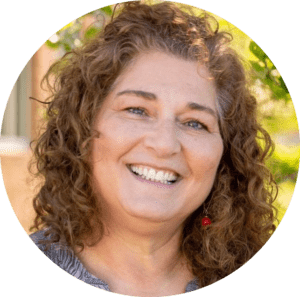Why I Don’t Limit Children’s Play Anymore

I began my career in 1988 as a family childcare provider. At that time, the only references I had were Mailbox magazine (with all their cute ideas), my licensing rep, and other providers.
I learned at a conference that I should make a paper plate pie chart that labeled all my interest areas, with a number for each interest area identifying the total children who could play at a time. During circle time, the children would choose where they wanted to play that day, and then we attached a clothespin with their name on it to that area on the pie chart. Cute, right?
Every morning, the children would happily choose their areas. But within minutes, someone wanted to go to another area! No one at the conference told me this would happen. I assumed that the children would stay in their chosen areas without issue. Not mine. Mine were wanderers, walking around a toy-laden desert looking for manna. Was I supposed to make them stop wandering to change their clothespin, or was I supposed to make them stay put in a place that no longer interested them?
They Were Learning, and (Fortunately) So Was I
As I understood more about how children learned, I realized that the children’s wandering was developmentally appropriate. Into the trash went the clothespin activity.
Instead, we used our circle time to make plans for the day. But even as my practices evolved, my fellow providers advised me to maintain the capacity limit in each center, so I did. When four children went into the Block area (capacity: 3), I would panic. Surely anarchy and mayhem would arise if I did not enforce the limits. But of course, it did not. If everyone was having fun and getting along in the space, I let the children be.
Finally, I decided to change this rule. No numbers in the interest areas! Play as you wish!
Why didn’t the capacity rule work for me? It was working for other providers. Except that it turned out that they spent a great deal of time “managing the rules” rather than teaching children.
A Small Change That Made a Big Difference

It seems like such a minute change, but back then I was so worried about going with my instincts: now, I am so glad I did. It seems like such a long time ago, and while I could not put words to my thinking 34 years ago, I now know that I would no longer put any kinds of limits on play other than those that directly impact children’s safety.
Children have the capacity to make and follow rules. When there is a struggle in the Block area, the children can resolve it—first with teacher support, then on their own.
We must remind ourselves that the struggles they have are real-life challenges. We do not need to avoid them, but rather embrace them, and teach the children how to manage them.
When I alone oversaw all the rules in 1988, I never gave the children the opportunity to have interactions that required them to think. I solved it all for them. By taking away the rules around playing, I opened their minds up to a world of learning how to identify, negotiate, and solve problems.
In other words, I became a true teacher.

Inspire Children With Project-Based, Investigative Learning
Promote discovery and inquiry with opportunities for children to think critically and develop process skills in the classroom with The Creative Curriculum.
Learn more About the Author: DJ Jenson
About the Author: DJ Jenson
DJ Jensen is an Instructional Coach for the Family Child Care Alliance of Maryland. She has worked in this field for 34 years and is the author of Monday Memo: Creating Change in Early Childhood Education, One Message at a Time. DJ lives in Baltimore with her magician husband Jon, her sweet dog; her jealous cat; and her new bunny, Elvis.